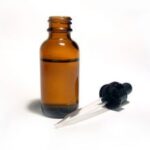You’ve probably heard a lot of buzz surrounding the myriad health benefits of omega-3 fatty acids. From Prevention Magazine, to WebMD, to Dr. Oz, the recommendation to increase your intake of Omega-3 seems to be coming from all directions. But why exactly are Omega-3 fatty acids so good for you, and in particular, why are they so good for your skin?
Omega-3 is an essential fatty acid, meaning your body cannot synthesize it on its own. But unlike saturated fats, Omega-3 is actually vital to the health of your cells. They’re liquid at room temperature, so they help to keep your skin moist. This helps to prevent that dreaded “sagging skin” look that people associate with aging. Omega-3 fatty acids are also great for anti-aging because they fight free-radicals. Giving your skin the proper amount of essential fatty acid helps protect the collagen in your tissue, so it remains elastic and youthful, preventing the formation of wrinkles, brow-creases, crow’s feet, so you stay looking young, vibrant, and healthy.
Sagging skin and wrinkles aren’t the only skin conditions that signify the need for more Omega-3 in your diet. In fact, if you have chronically dry skin, cracked skin, or dandruff, you could probably benefit by taking a supplement. The natural liquid state of this essential fatty acid helps to maintain the moisture level of your cells from the inside out, strengthening your cell walls and keeping your skin healthy without spending a fortune on anti-aging creams or lotions.
The best way to get the anti-aging benefits skin benefits of Omega-3 is to include fish as a regular part of your diet. In addition to being a great source of low calorie protein to maintain muscle and manage your weight, fish are probably the best known source for obtaining Omega-3 naturally. Cold water fish usually have the highest concentration, so look for salmon, herring, mackerel, or tuna.
Nuts can be another great natural way to increase your Omega-3 intake. Walnuts, flaxseed, and almonds are abundantly available at your supermarket or convenience store, and can be added as a salad topping, eaten alone as a snack, blended into a smoothie, or best of all, added to breadcrumbs to make a delicious coating for the cold water fish you bought earlier.
If fish and nuts are difficult to add to your diet due to allergies, availability, or simple taste preference, there are numerous brands of fish oil and Omega-3 supplements available. They come in many different varieties, including fragrance-free and soft-gel, so you’ll easily be able to find one that suits your needs. Make sure to take the recommended dosage, and follow all directions indicated on the packaging.
Omega-3 fatty acids contribute to anti-aging in numerous other ways, but increasing your intake will have an outwardly visible impact that you and others will notice. That wrinkle free smile on your face will thank you.
References:
http://www.webmd.com/skin-problems-and-treatments/features/want-healthy-skin-feed-well
http://www.doctoroz.com/videos/daily-dose-omega-3
http://www.simplyantiaging.com/146/omega-3-look-younger/
http://raisingahealthyfamily.com/omega-3-is-the-secret-to-glowing-skin/






